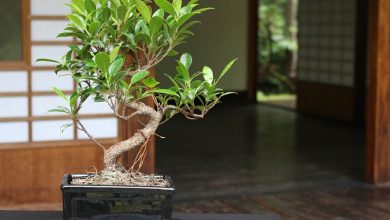Plague of slugs or limacos and snails, avoid them and fight them in an ecological way

The plagues of slugs and snails can cause serious damage to our organic garden in no time. There are ecological methods to avoid pests of these herbivorous mollusks that are most active mainly in autumn and spring. Slugs differ from snails because they do not have a shell.
Both snails and slugs act at night and it is when they come out to feed, attacking first the leaves, buds and tender shoots , so we will have them well observed and protected. They like humidity and need it to produce that slime that they leave when they move and by which they are easily recognizable. The times of the year when they are most active is in the months with the most rain and humidity .
A single snail can lay about 200 eggs. Usually the setting is in autumn and spring. During the winter or low temperatures they could hibernate in order to survive, the same will do in summer or when the temperatures are extremely high. Snails can live up to 5 years and slugs can live up to 2 years.
Prevent pests of slugs or limacos and snails
* Use drip irrigation : snails and slugs love moisture. If you use the drip irrigation method, the plants will not have that humidity that other types of irrigation cause and the mollusks will go to other areas in search of humidity. Watering first thing in the morning rather than at night is also very helpful.
* Predators of snails and slugs : their natural enemies will help keep them in check and prevent their massive proliferation. We can count on the help of salamanders, lizards, toads and frogs, centipedes, beetles, snakes, turtles, hedgehogs, ducks, chickens or birds.
* Plants that repel slugs and snails : avoid plants such as rosemary, lavender, mustard, sage, nasturtium, begonia or even geraniums. It would be a good idea to plant them near the crops most susceptible to being attacked or near the seedlings so that they do not attack the seedlings.
* Traps for slugs and snails: to provide shelter and to be able to catch them, we can put tiles, stones, branches, bowls or other similar objects where slugs or slugs and snails can shelter during the day and this will make it easier for us to easily locate and remove them manually.
* Keep an eye on the shady and humid places of the orchard and garden : slugs and snails like to take shelter in shady and humid places and choose them to lay their eggs. Keep sites with these characteristics under observation in times of greatest activity of these mollusks.
Eliminate snail and slug pests
* Remove snails and slugs manually : both snails and slugs are large enough to be removed by hand. We must also look at objects and materials around, where they could take refuge.
* Beer for snail and slug infestation : at night, put some beer in small containers half-buried in the ground and in the morning you will find snails in the containers. You can also impregnate a sack with beer and leave it open, in the morning you will have the slugs and snails inside. They love beer. It also works with a mixture of water, sugar, and yeast.
* Barriers that prevent the advance of snails and slugs : these mollusks hate copper, so we can surround the crops with copper wire or thread during the time when they are most active. Sprinkling ash around plant bases, eggshell chips, gravel, sand, sawdust, pineapple, or even coffee grounds, deters snails and slugs from moving forward.
* Soap to eliminate slugs and snails plague : another ecological way to combat mollusc pests is by spraying the soap obtained from washing nuts on the crops . They will leave your garden immediately with this remedy. You have more information here
* Orange peels for slugs and snails plague : the skins of the oranges are distributed face up and the snails and slugs will come. In the morning you will find them there and you can eliminate them.
* Garlic for slugs and snails plague : prepare a maceration with 4 crushed garlic cloves per liter of boiling water. Leave it for 12 hours, strain and dilute with 1 liter of water and spray on the affected crops.


![Photo of Stolons: [Concept, Planting, Care, Pests and Diseases]](https://www.complete-gardening.com/wp-content/uploads/2022/08/stolons-concept-planting-care-pests-and-diseases-390x220.jpg)
![Photo of Tomato Caterpillar: [How to Identify and Fight It]](https://www.complete-gardening.com/wp-content/uploads/2022/08/tomato-caterpillar-how-to-identify-and-fight-it-390x220.jpg)
![Photo of Ammonium Sulfate: [Concept, Operation and Application]](https://www.complete-gardening.com/wp-content/uploads/2022/08/ammonium-sulfate-concept-operation-and-application-390x220.jpg)